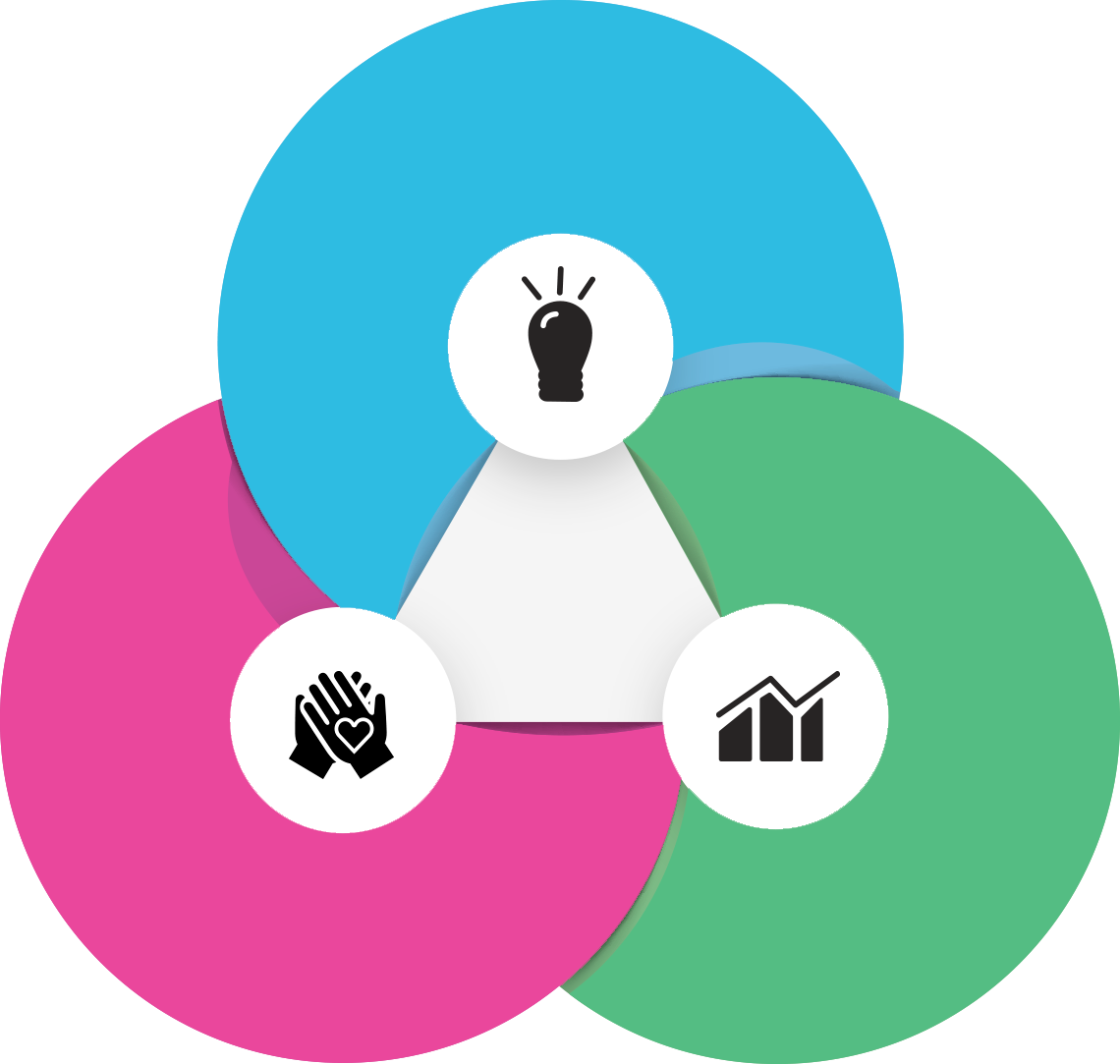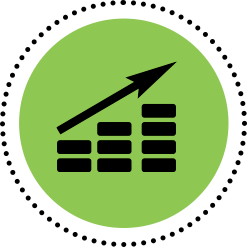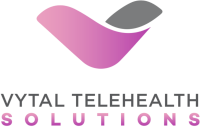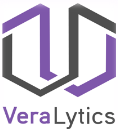Approach
Impact Investing
For many years, philanthropy and venture investing have been thought of as separate disciplines–one championing social change and causes, the other a hardline pursuit of financial gain. The idea that the two philosophies could be integrated in the same deals—in essence, delivering a financial return while also doing social good—struck most philanthropists and investors as far-fetched. Not anymore.
The common definition of impact investing is what refers to investments "made into companies, organizations, and funds with the intention to generate a measurable, beneficial social or environmental impact alongside a financial return". Impact investing, which seeks to generate social and/or environmental benefits while delivering a financial return, is expanding as a promising tool for both investors and philanthropists.
Our approach to impact investing includes key elements such as:


Investment with return expectations

Range of return expectations and asset classes

Impact measurement
Symbio
www.symbiohealth.coSymbio provides an advanced cloud-based, AI driven, interactive, HIPPA compliant platform that uses best-in-class security technology and increased transparency to put pertinent real-time data at the fingertips of first responders, physicians, 211 organizations and payers to accelerate live-saving patient outcomes and lower costs. A unique aspect of the solution is the inclusion and impact on behavioral health cases for the first responder use case.
The Symbio solution will reduce costs, improve communication and transparency and accountability, improve collaboration among the ecosystem members, improve decision support, improve outcomes, and improve visibility into the data. This inclusive solution is also applicable to other organizations such as the UN, the Red Cross and WHO that provide global implications.
Vytal Health Solutions
vytalthsolutions.comThe mission of Vytal is to be able to provide "Care Anywhere", so that the quality of and amount and type of care you receive isn’t dependent on location. Vytal provides a unique ability to bring care to the individual and isn’t limited by the type of care.
Vytal solution works within the current healthcare and payor system to be fully reimbursed, provide higher patient outcomes, reach underserved demographics and all at a lower cost. The solution includes advanced technologies such as artificial intelligence, machine learning, natural language processing and blockchain ledger functionality to extend its capabilities beyond other competitive solutions that even your local MD can't provide.
VeraLytics
veralytics.coVeraLytics is a Health Gateway company, which is a specially designed healthcare technology platform that collects extensive patient data from a wide range of disparate sources and devices to provide Smart Engagement, a 360° view of data that provides proactive analysis, care through real-time communication and improved outcomes.
We at Veralytics seek to create a solution that enables this evolution of Smart Engagement, a more connected patient journey and an adoption of methods, technologies, solutions and standards that will drive those objectives that can make outcomes more paramount. The benefits for stakeholders are:
- Care coordination
- Improving business and administrative processes
- Increased patient safety and satisfaction
- Value-based care
- Costs containment and revenue
GGRX
www.ggrx.ioGGRX is an AI driven blockchain-enabled carbon currency platform transforming the global carbon credit market; by leveraging our technology solution it addresses critical challenges in the carbon market which are: trust, cost, and scale.
At the core of our innovation is our advanced blockchain technology, AI-driven data analytics, and scalable platform. GGRX provides solutions that validate the quality of carbon credits, ensuring reliable financial instruments for investors and stakeholders. With a focus on secure, efficient, and disruptive technologies, GGRX is reshaping how carbon credits and digital assets integrate into the global financial system.
In addition, we are minting a CARBION token, a data-backed, monetizable asset that goes beyond traditional standards. It integrates energy efficiency certificates, renewable energy production, and peak-shaving initiatives, unlocking economic and environmental value for both users and investors.
Executable Entrepreneurship
Our approach is different but is based on decades of experience across not only proven methodic approaches but executed events.

Risk
+
ACTION
=
Change
There are several accepted definitions and models for entrepreneurship, but our experience has led us to focus on entrepreneurship being defined more along the economic theories, which emphasizes the creation or extraction of value. With this definition, entrepreneurship is viewed as catalyst of change, generally entailing risk beyond what is normally encountered in starting a business, has an economic focus and priority, but may include other values than simply economic ones.
The second component that we deem necessary from our experience is that strategies need to be actionable and executable. Our deep analytic experience allows us to view opportunities at deeper and broader level, allowing us to have data and information to make decisions that others don’t consider. This helps us drive results in a proactive v reactive manner, allows for transparency in the analysis and provides a higher level of success.
Strategic Funding Approach
As in all things, you can blindly do, do or be more strategic about your approach.
Strategic funding considers the way different types of financing options meet the broader goals and objectives of an organization. This approach allows us to consider significantly more variables and it attempts to find an optimal mix of funding among the various options that is appropriate for the part of the business being financed and ultimately creates and maximized value.
We also have created a unique opportunity for donors to have the opportunity to not only contribute to the social good as with a general donation, but also to earn equity in the organization that are created and funded.
Our Impact Investment Thesis
As the problem’s societies face become more entrenched and complex, it’s clear that government and philanthropy can’t solve them on their own. A look at the amounts of capital this bears out - in the U.S. alone, philanthropy is approximately $390 billion, government spending is $3.9 trillion, and capital markets (all debt and equity investments) encompass $65 trillion. On a global scale, total investments are estimated at $300 trillion. Thus, a 1% shift in global capital markets towards impact investing–or investments that work toward social good–could cover the estimated outstanding $2.5 trillion annual funding gap to achieve the United Nations’ Sustainable Development Goals (SDGs). As this example shows, harnessing capital markets can have a huge societal benefit.
-

Investment with return expectations
Impact investments are expected to generate a financial return on capital or, at minimum, a return of capital. Impact investing comes with a specific intention and necessitates that investments be managed towards that intention. This includes having feedback loops in place and communicating performance information to support others in the investment chain to manage towards impact performance.
-

Range of return expectations and asset classes
Impact investments target financial returns that range from below market (sometimes called concessionary) to risk-adjusted market rate, and can be made across asset classes, including but not limited to cash equivalents, fixed income, venture capital, and private equity.
-

Impact measurement
A hallmark of impact investing is the commitment of the investor to measure and report the social and environmental performance and progress of underlying investments, ensuring transparency and accountability while informing the practice of impact investing and building the field.
Investors’ approaches to impact measurement will vary based on their objectives and capacities, and the choice of what to measure usually reflects investor goals and, consequently, investor intention. In general, components of impact measurement best practices for impact investing include:
- Establishing and stating social and environmental objectives to relevant stakeholders
- Setting performance metrics/targets related to these objectives using standardized metrics wherever possible
- Monitoring and managing the performance of investees against these targets
- Reporting on social and environmental performance to relevant stakeholders
-

Use evidence and impact data in investment design
Investments cannot be designed on hunches, and impact investing needs the proactive application of data analytic methods tools, and analytics combined with real-world evidence and data to drive intelligent investment design that will be useful in contributing to social and environmental benefits.





